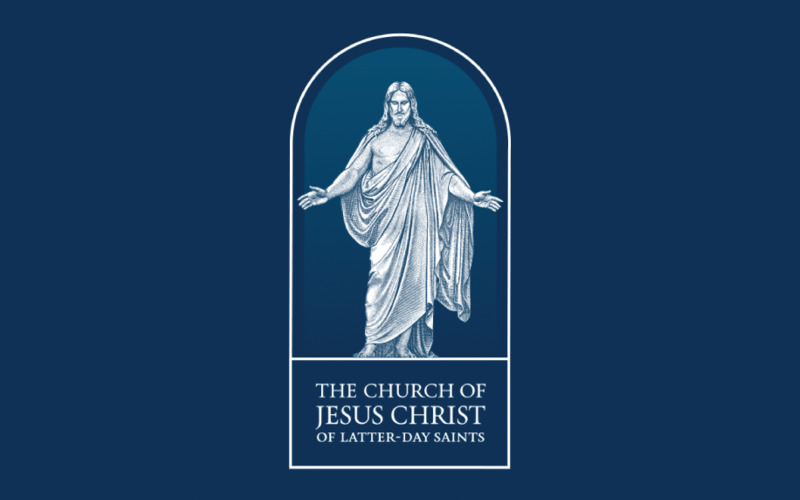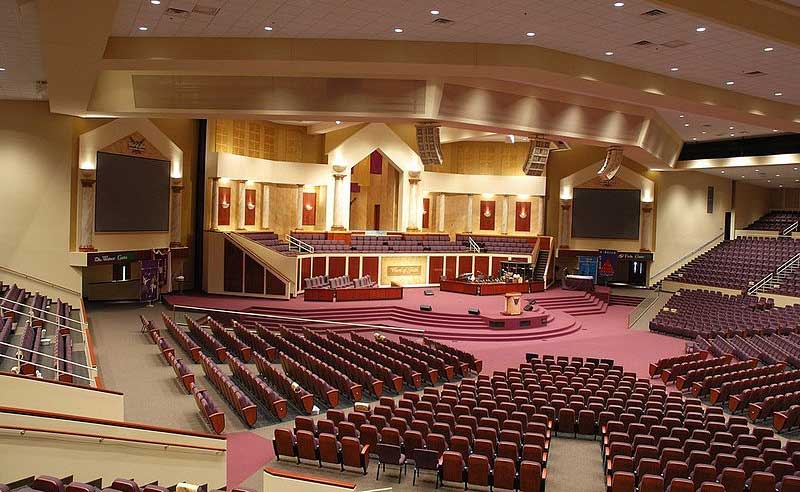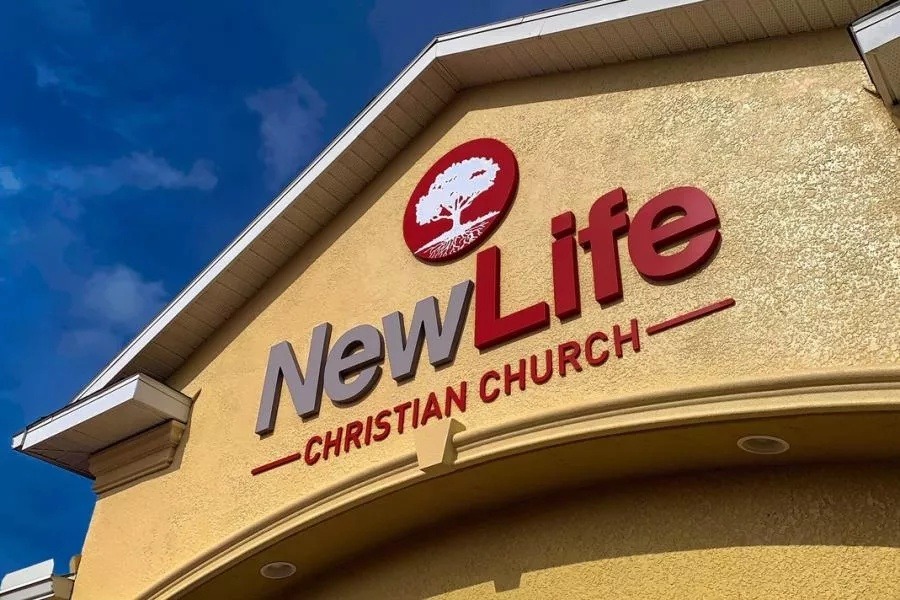All About The Church Of Jesus Christ
Name Indication Of The Church Of Jesus Christ:
The Church of Jesus Christ of Latter-day Saints is the official name of the Church. It is commonly referred to as the Mormon Church because of its belief in the Book of Mormon, and members are often called Mormons or Latter-day Saints.
From 1830 until 1838, members of the Church referred to it as “The Church of the Latter-day Saints” or “The Church of Christ.” On April 26, 1838, the official title of the Church was given by revelation: “For thus shall my church be called in the last days, even The Church of Jesus Christ of Latter-day Saints” (D&C 115:4).
Each phrase in this name is significant. “The Church of Jesus Christ” indicates that Jesus Christ stands at the head of the Church, and that his gospel, teachings, and divine authority constitute the fundamental basis of the Church. The term “Saints” is in accord with New Testament usage connoting a member of the covenant group (Acts 9:13, 32, 41; Rom. 1:7; Phil. 1:1). It has no direct relationship to the connotation of “saints” as used in Roman Catholic or Orthodox traditions. The term “Latter-day” indicates that the Church was restored in the last era of human history prior to the second coming of Christ and also distinguishes today’s Church from the “Former-day” organization established by Christ during his mortal ministry in Palestine. The Church of Jesus Christ of Latter-day Saints is a divinely restored embodiment of the original Church of Jesus Christ, and the appointed guardian of its doctrine, authority, and divine mission.

Goals Of The Church Of Jesus Christ:
The Church is the kingdom of God on the earth, a divinely established institution through which God accomplishes his purposes pertaining to the salvation of his children. President Spencer W. Kimball suggested that the Church has three primary objectives to help people come unto Christ, sometimes identified as its three principal missions:
- The first is to proclaim the gospel to all mankind. The Church does this through a large missionary force, as well as through the efforts of individual Church members.
- The second mission is to perfect the Saints, which includes teaching them the gospel of Christ, administering the essential ordinances of salvation, and assisting them in a lifelong process of repentance, discipleship, and preparation for eternal life.
- The third mission of the Church is redeeming the dead, making it possible for generations of the deceased, who had no opportunity to accept the gospel in mortality, to receive the truths and ordinances of salvation. This work is accomplished by proxy ordinances performed in the temples of the Church. It leads to Church’s encouragement of family history research. Later, Church Presidents may alter or add to these missions as directed or inspired by the Lord.
The Church is also a society of believers to provide a framework for cooperative effort, mutual support, and temporal assistance as needed. The bonds of love among the Saints are a vital prerequisite to the accomplishment of the Church’s purposes and are identified in the scriptures as one sign of the true church of God (John 13:35). Latter-day Saints regard themselves as the “covenant people” of the Lord, heirs to the ancient covenant between God and Abraham, and, by birth or adoption, members of the house of Israel. The Church is the instrument through which God is gathering the dispersed tribes of Israel in the latter days in accordance with his promises to Abraham and other biblical prophets.
Beliefs Of The Church Of Jesus Christ:
The Church of Jesus Christ of Latter-day Saints is distinguished from other Christian churches in several fundamental ways. Most of these differences stem from the Church’s essential belief in continuing revelation. Thus, Latter-day Saints accept the Holy Bible as the word of God, and also accept the Book of Mormon, Doctrine and Covenants, and Pearl of Great Price as scripture and as standard works. They accept the calling of modern prophets and apostles, beginning with Joseph Smith, and continuing to the present. LDS doctrines regarding the nature of the Godhead, the plan of salvation, vitality of priesthood authority, and the interpretation of scriptural prophecies also differ in various ways from those of the Roman Catholic, Orthodox, or Protestant branches of Christianity. Latter-day Saints emphasize religious freedom and tolerance. The Church does not typically participate in formal ecumenical activities; however, it is committed to cooperate with other religious, civic, and educational organizations in advancing common moral and social purposes.
Church members believe in a spiritual family, with Jesus Christ being the brother of all who live in this world. The church has a positive view on Adam and Eve’s fall, believing that it was essential to allow humankind to experience separation from God to exercise full agency in making decisions for their own happiness. Members believe if they participate in ordinances like baptism, under priesthood authority, they are bound to Jesus Christ and he saves them in their imperfection if they continually keep their promises to him. Members believe that through ordinances including the temple sealing and temple endowment, anyone can be eternally connected with their families beyond this life and can be perfected in Jesus Christ to eventually become like their Heavenly Parents in essence gods.
The LDS Church shares various teachings with other branches of Christianity. These include a belief in the Bible, the divinity of Jesus, and his atonement and resurrection. LDS theology also includes belief in the doctrine of salvation through Jesus alone, restorationism, millennialism, continuationism, conditional substitutionary atonement or penal substitution, and a form of apostolic succession. The practices of baptism by immersion, the eucharist, and Sabbath observance are also held in common.
Nevertheless, the LDS Church differs from other churches within contemporary Christianity in other ways. Differences between the LDS Church and most of traditional Christianity include disagreement about the nature of God, belief in a theory of human salvation that includes three heavens a doctrine of exaltation which includes the ability of humans to become gods and goddesses in the afterlife, a belief in continuing revelation and an open scriptural canon, and unique ceremonies performed privately in temples, such as the endowment and sealing ceremonies. A number of major Christian denominations view the LDS Church as standing apart from creedal Christianity. However, church members self-identify as Christians. Latter-day Saints believe in the resurrection of Jesus.
The faith itself views other modern Christian faiths as having departed from true Christianity by way of a general apostasy and maintains that it is a restoration of 1st-century Christianity and the only true and authorized Christian church. Church leaders assert it is the only true church and that other churches do not have the authority to act in Jesus’ name.
Organization Of The Church Of Jesus Christ:
The Church sees itself as organized after the basic pattern of the first century Church of Christ and in accordance with a series of revelations to Joseph Smith (D&C 20; 107; Article of Faith 6). Successive Presidents of the Church have refined the organization to meet changing needs and demands of an expanding international organization but have not altered the fundamental structure of the Church as it was first organized. The Church is presided over by a president, who generally has two counselors; together with him, they constitute the First Presidency of the Church.
A second governing body, the Quorum of the Twelve Apostles, consists of twelve men called to be “special witnesses of the name of Christ in all the world” (D&C 107:23). The Quorum of the Twelve collectively holds in latent form the same priesthood authority as the President of the Church, and in the event of his death is the body that governs the Church and installs a new president. Members of the First Presidency and the Quorum of the Twelve Apostles are regarded and sustained by vote of Latter-day Saints as prophets, seers, and revelators, receiving direct revelation from Jesus Christ. These brethren are assisted by members of the quorums of the Seventy and the Presiding Bishopric.
The quorums of the Seventy, each consisting of up to seventy men, have special responsibility for missionary work and also supervise Church activities in geographic areas under the direction of the Twelve. The Presiding Bishopric is responsible for the temporal affairs of the Church, including finances, records, buildings, and administration of the Church Welfare Services program. All these men are designated by Latter-day Saints as General Authorities because their authority extends over the entire Church. The headquarters and central administrative offices of the Church are located in Salt Lake City, Utah.
The Church sees itself as organized after the basic pattern of the first century Church of Christ and in accordance with a series of revelations to Joseph Smith (D&C 20; 107; Article of Faith 6). Successive Presidents of the Church have refined the organization to meet changing needs and demands of an expanding international organization but have not altered the fundamental structure of the Church as it was first organized. The Church is presided over by a president, who generally has two counselors; together with him, they constitute the First Presidency of the Church.
A second governing body, the Quorum of the Twelve Apostles, consists of twelve men called to be “special witnesses of the name of Christ in all the world” (D&C 107:23). The Quorum of the Twelve collectively holds in latent form the same priesthood authority as the President of the Church, and in the event of his death is the body that governs the Church and installs a new president. Members of the First Presidency and the Quorum of the Twelve Apostles are regarded and sustained by vote of Latter-day Saints as prophets, seers, and revelators, receiving direct revelation from Jesus Christ. These brethren are assisted by members of the quorums of the Seventy and the Presiding Bishopric.
The quorums of the Seventy, each consisting of up to seventy men, have special responsibility for missionary work and also supervise Church activities in geographic areas under the direction of the Twelve. The Presiding Bishopric is responsible for the temporal affairs of the Church, including finances, records, buildings, and administration of the Church Welfare Services program. All these men are designated by Latter-day Saints as General Authorities because their authority extends over the entire Church. The headquarters and central administrative offices of the Church are located in Salt Lake City, Utah.
The President of the Church receives revelation from God that relates to the whole Church, but all leaders and members are entitled to divine inspiration within the scope of their responsibilities and regarding their personal lives. Such revelation helps bring unity and common purpose to the Church, making it like a living organism, the “body of Christ” (1 Cor. 12:12–28; Col. 1:18).
General Authorities preside over the Church throughout the world, overseeing those who administer geographical units known as wards, stakes, regions, and areas. A stake is a cluster of wards, a region is a group of stakes, and an area is a group of regions. A ward is a congregation of Saints, usually numbering between 200 and 600 members. Wards are usually organized according to geographical boundaries, and all members living within those boundaries belong to the same ward.
A ward is led by a bishop who serves usually about five years and is called from among the membership of the congregation; under the direction of the bishop, the ward is usually staffed entirely by its own members. Several wards together, usually no more than ten, constitute a stake, led by a stake president, also called from among the members of the stake. The term “stake” was given by revelation (D&C 101:21) and is linked to Old Testament imagery of Zion as a great tent upheld by lengthened cords and stakes (Isa. 33:20; 54:2).
In areas where Church population is too small for wards and stakes to be formed, it is administered through missions, districts, and branches. While the main function of missions is to proclaim the gospel, in some areas of the world they also administer smaller units of the Church known as districts, which are made up of branches, usually consisting of fewer than 200 members. Branches can also exist under stakes if the units are too small to constitute a ward.
Within the wards and branches of the Church, there are specialized auxiliary organizations intended to meet specific needs of groups within the Church. They provide important support to the quorums of the priesthood. The largest of these is the Relief Society, the women’s organization established in 1842 under the direction of the Prophet Joseph Smith. It provides cultural, social, and spiritual enrichment to the women of the Church and also renders compassionate service to families in need, hence the name Relief Society.
Practices Of The Church Of Jesus Christ:
Regular worship services in the Church are conducted in individual wards. Members of the ward meet together each Sunday for a general worship service known as sacrament meeting. The sacrament, or the Lord’s Supper, is administered, ward business is conducted, hymns are sung, and members of the congregation give inspirational talks on gospel subjects. Members also meet each Sunday in smaller priesthood or auxiliary groups. In all, formal Sunday meetings may last up to three hours.
Latter-day Saint communities are involved in an entire way of life, and a typical family is likely to spend many hours each week in Church-related activities, meetings, and service. Regular conferences ward, stake, regional, area, and general provide continuity and association with the larger community of the Church.
Latter-day Saints regard the family as the basic unit of the Church, and of society, and emphasize the sanctity of marriage and the importance of family ties. Mormons believe that marriage and family relationships can continue beyond this life into the eternities, that men and women are equal in the sight of God, and that the blessings of the gospel revolve around the family.
World Religions
Read also:
Recovery from Mormonism | 4 things and 12 Steps We want you to know?
Mormon marriage | Common questions about marriage in the LDS
Mormon missionaries | Common questions about Missionaries
International Church Of Christ | History, Beliefs, Practices and Criticism



